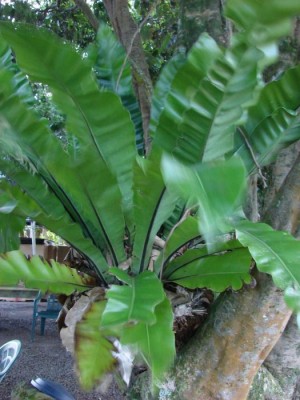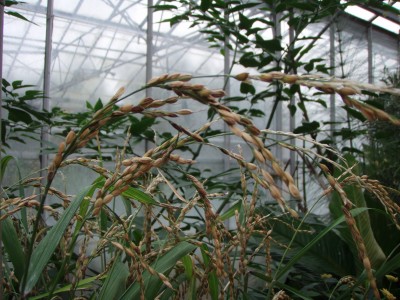-
Recent Posts
Recent Comments
- kriesnendu houly on Amorphophallus konjac: Can You Resist the Lure of the Devil’s Tongue?
- kriesnendu houly on Amorphophallus konjac: Can You Resist the Lure of the Devil’s Tongue?
- Zoe Cooke on Arachis glabrata – Perennial Peanut
- Alexander Gavin on Catharanthus roseus – Cancer fighting
- Edward Ofori on Catharanthus roseus – Cancer fighting
Categories
Meta
Activity
- Africa
- Americas
- Annual Fund
- Asia
- Australia
- Carnivorous Plants
- Collaborators
- Compost
- Countries
- Crops
- Design
- Evolution
- Ferns
- Fish
- Hands-on
- Integrated Pest Management
- Interactive
- Labelling
- Learning and Teaching
- Low Nutrient Environments
- Lycopodiophyta
- Madagascar
- Meeting
- Mexico
- Monocots
- Neotropics
- Palaeotropics
- People
- Philippines
- Planning
- Pond
- Primary Schools
- Public
- School Visits
- Secondary Schools
- Species
- Staff
- Students
- Technology
- Uncategorized
- Water Plants
Archives
Blogroll
Rhipping yarns about Rhipsalis baccifera
Posted in Africa, Americas, Evolution, Madagascar, Species, Students
Tagged #NatSCA2015, Ali Eyres, biogeography, Cactaceae, cactus puns, Caryophyllales, disjunct, dispersal, distribution, Epiphyte, epiphytic, migration, Mistletoe Cactus, monty python, New world, Old world, Rhipsalis, Rhipsalis baccifera, Spaghetti Cactus, synonyms, The Guard Cell, Tropical biodiversity, vicariance
5 Comments
Aframomum melegueta (Grains of paradise) is not Alligator pepper
This gallery contains 4 photos.
A lot has been written about Aframomum melegueta and it has been said to be the scientific name for both Alligator pepper and Grains of Paradise. However, the two are completely different species of Aframomum. Let’s know a little about A. … Continue reading
Asplenium nidus
Asplenium nidus : The bird’s nest fern
Commonly known as a bird’s nest fern, Asplenium nidus has many names. For instance, in Malaysia it is called: Rumah Langsuyar, in the Philippines: Pakpak-lauin and in China: Tai wan shan su hua. There are also many synonyms for this fern, which include Asplenium ficifolium, Asplenium antiquum, Neottopteris mauritiana, Neottopteris nidus. It belongs to the Plantae Kingdom , Pteridophyta phylum, Polypodiopsida class, Polypodiales order, the Aspleniaceae family, Asplenium genus.
Multi-tasking in the plant kingdom (Araceae)…

Fig. 1: S. cochlearispathum inflorescence, showing spathe and spadix characteristic for the Araceae family. Scale bar: 2 cm.
© Waheed Arshad, 2013
Species in the Spathiphyllum genus are members of the monocotyledonous flowering plant family Araceae, often called the arum or aroid family. They are native to tropical regions of the Americas, and southeastern Asia, most commonly in lowland forests where they are closely associated with streams1.
S. cochlearispathum, Liebm. is one of the largest species in the genus, growing to around 80 cm (31.5 inches) in height. As evergreen herbaceous perennials, certain species in the genus are very commonly sold as house plants, a large number as hybridised “Peace Lilies”. This common name is actually somewhat confusing, given the genus does not belong to the true lily (Liliaceae) family!1 Continue reading
Posted in Americas, Asia, Learning and Teaching, Monocots, Neotropics, Species, Students, Uncategorized
Tagged air cleansing, Araceae, aroid, arum, biofilter, bract, cleaning, cochlearispathum, contaminants, environment, house plant, indoor, inflorescence, NASA, Peace Lily, spadix, spathe, Spathiphyllum, Spathiphyllum cochlearispathum, Waheed Arshad
Leave a comment
Oryza sativa: A Résumé of Rice
Few plant species can have been better studied than rice. There is a wealth of information out there; I’ve picked a few interesting and enlightening extracts- a résumé of rice if you like.
Posted in Crops, Monocots, Students
Tagged Golden Rice, IRRI, Oryza sativa, Poaceae, Rice, Tropical biodiversity, Tropical Crops
3 Comments
Colocasia esculenta
Taro: The Oldest Food Crop on Earth with a 10,000 Year Culinary History
Colocasia esculenta, also known as Taro or Dasheen as well as many other vernacular names, is an important food crop, widely cultivated in a zone spanning across Asia, South East Asia and Melanesia. Its starchy root is included in the diet of about half a billion people, making it an important source of nutrition (Lebot, 2009). It is also, most probably, the oldest crop on earth with a history going back more than 10,000 years. Evidence of taro use during the early and mid-Holocene period has been found in the form of taro starch traces on tools used to process starchy food at Kuk Swamp in the Western Highlands of New Guinea (Fullager, et al, 2006).
Over the millennia, it has acquired considerable socio-cultural significance. It is a prestige crop for gifting and feasting; parts of the plant are used medicinally and it features in the folklore of Oceania and South East Asia (Onwueme, 1999).
Posted in Asia, Crops, Species, Students
Tagged AGM, archeology, Asia, colocasia, corms, dasheen, eddoe, pacific, taro, tender perennial, tropical crop, Tropical food plants
Leave a comment
Tillandsia usneoides Spanish Moss

Lacking ideas this Movember? Why not take inspiration from Spanish Moss and the great Spanish explorer Hernando De Soto, from whom the plant was thought to originate. Well at least as the legend goes…
Apparently Hernando De Soto pursued an Indian maiden through the forest and up a live oak tree. During the chase his gray beard became entangled in the tree, giving the maiden an opportunity to escape. De Soto freed himself, but several wisps of his beard were left behind. These remnants became Spanish Moss [1].
Starfruit: food, healer, domestic cleaner and much more
Averrhoa carambola L., the starfruit is one of those strange and unique products that come from the east of Asia, with its funny shape and curious flavours, which you can love or hate, it is beggining to appear broadly in the European and North American markets. It can be used to decorate a dessert or to make a salad a new experience of flavours. In addition it is increadibly widely used in traditional medicine and can decorate your garden or help you to take the rust off!!
Posted in Africa, Asia, Learning and Teaching, Palaeotropics, Species, Students
Tagged Asia, Averrhoa, Averrhoa carambola, Carambola, Crop, Cultivation, Fruit, Indonesia, Medicine, Oxalidaceae, Plant movement, star fruit, Starfruit, Tropical food plants
4 Comments






